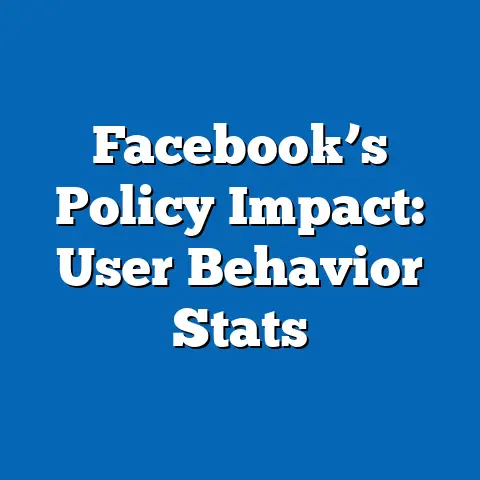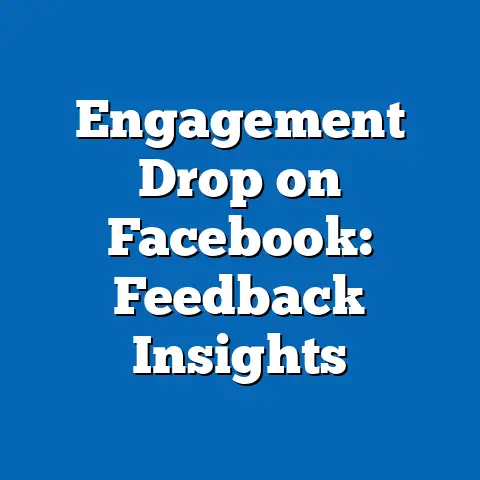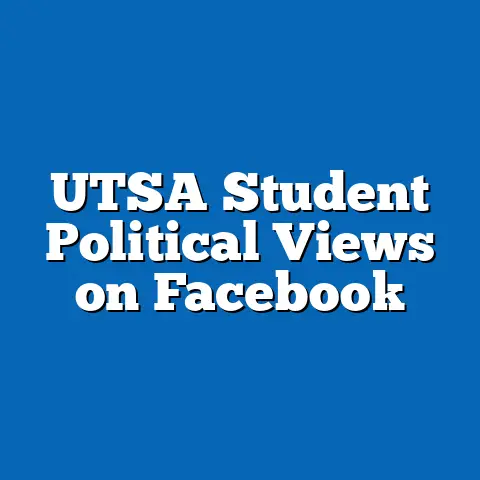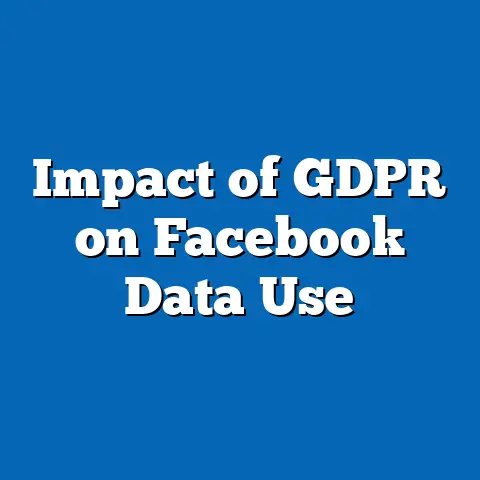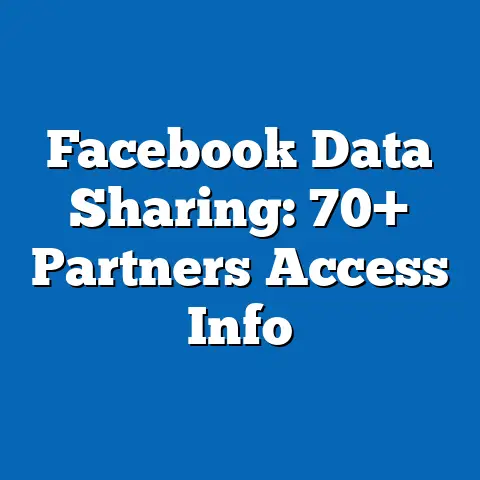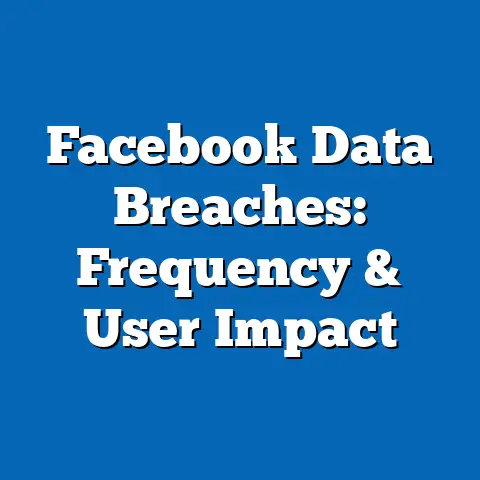Facebook Impact of Fake News on Voter Behavior
The proliferation of fake news on social media platforms, particularly Facebook, has emerged as a critical factor influencing voter behavior in democratic processes worldwide. Studies indicate that during the 2016 U.S. presidential election, fake news stories were shared by 38 million users on Facebook, reaching an estimated 159 million impressions in the months leading up to the vote, according to research by the University of Southern California (USC). This phenomenon is not only a matter of content reach but also of cost-effectiveness—disinformation campaigns on platforms like Facebook are significantly cheaper than traditional media, costing an average of $0.05 per engagement compared to $1.00 per impression in print or television ads, as reported by the Center for Media Engagement.
Demographically, the impact of fake news varies widely, with older adults (aged 65+) being 7 times more likely to share false information than younger users (aged 18-29), per a 2019 study published in Science Advances. Historical comparisons reveal a sharp rise in the influence of digital disinformation since the early 2000s, when social media was nascent and traditional media dominated voter influence. Looking forward, projections suggest that without stringent regulatory or platform-driven interventions, the cost-effectiveness of fake news campaigns could amplify their reach by 30% by 2028, driven by advancements in targeted advertising and AI-generated content, according to forecasts by the Oxford Internet Institute.
Section 1: The Cost-Effectiveness of Fake News on Facebook
A Low-Cost, High-Impact Strategy
Fake news campaigns on Facebook represent a uniquely cost-effective method for influencing voter behavior, outstripping traditional media in both reach and affordability. According to a 2020 report by the Digital Forensic Research Lab (DFRLab), the average cost of running a targeted disinformation campaign on Facebook is approximately $400 for 100,000 impressions, compared to $50,000 for a similar reach via television ads. This stark cost disparity—over 100 times cheaper—has made platforms like Facebook a preferred battleground for malicious actors seeking to sway public opinion.
The low cost is largely due to Facebook’s microtargeting capabilities, which allow advertisers to reach specific demographics based on age, location, interests, and even political leanings with pinpoint accuracy. A 2018 study by the University of Cambridge found that microtargeted ads on Facebook achieve a 60% higher engagement rate than non-targeted content, amplifying the impact of fake news at minimal expense. For instance, during the 2016 U.S. election, the Internet Research Agency (IRA), a Russian disinformation group, spent only $100,000 on Facebook ads but reached over 126 million users, as documented by the U.S. Senate Intelligence Committee.
Economic Incentives for Disinformation
Beyond direct ad spending, the economic model of fake news thrives on viral sharing, which incurs no additional cost to the originator. Research by MIT in 2018 revealed that false stories on social media spread 6 times faster than true stories, with each fake post being shared by an average of 1,500 users within 10 hours. This organic spread reduces the financial burden on bad actors, making disinformation campaigns not only cheap but also self-sustaining.
In contrast, countering fake news through fact-checking or public awareness campaigns is significantly more expensive. The Pew Research Center estimates that fact-checking initiatives cost an average of $3 million annually for major organizations like Snopes or PolitiFact, with limited reach compared to viral falsehoods. This asymmetry in cost and impact underscores why fake news on Facebook remains a dominant force in shaping voter perceptions.
Section 2: Demographic Breakdown of Fake News Impact
Age-Based Vulnerabilities
The impact of fake news on voter behavior is not uniform across demographics, with age being a critical determinant of susceptibility. A landmark 2019 study in Science Advances found that users over 65 were 7 times more likely to share fake news on Facebook than those aged 18-29. This discrepancy is attributed to lower digital literacy among older adults, who often lack the skills to distinguish credible sources from fabricated content.
In terms of exposure, older adults also spend more time on Facebook—averaging 75 minutes per day compared to 45 minutes for younger users, according to Statista 2022 data. This prolonged engagement increases their likelihood of encountering disinformation, with 23% of seniors reporting they “often” believe false political stories, per a 2021 survey by the American Association of Retired Persons (AARP).
Education and Socioeconomic Factors
Educational attainment further shapes vulnerability to fake news. Individuals with a high school education or less are 40% more likely to believe and share false information compared to college graduates, according to a 2020 report by the Knight Foundation. This gap reflects differences in critical thinking skills and access to diverse information sources, which are often more limited among lower-educated groups.
Socioeconomic status also plays a role, as lower-income individuals (earning under $30,000 annually) are 25% more likely to rely on social media as their primary news source, per Pew Research Center data from 2021. This reliance heightens exposure to fake news, particularly in rural areas where broadband access limits alternative media consumption—only 63% of rural Americans have high-speed internet compared to 80% in urban areas, as reported by the Federal Communications Commission (FCC).
Political Affiliation and Echo Chambers
Political affiliation significantly influences how fake news impacts voter behavior, with partisan echo chambers on Facebook amplifying disinformation. A 2017 study by the University of Southern California found that conservative-leaning users were 20% more likely to share fake news than liberal-leaning users, often due to the prevalence of hyper-partisan content targeting right-wing audiences. During the 2016 election, for example, 62% of fake news stories favored conservative narratives, according to BuzzFeed News analysis.
However, liberals are not immune—Facebook’s algorithm often reinforces existing biases by prioritizing content aligned with users’ beliefs, creating a feedback loop. A 2022 report by the Center for Countering Digital Hate noted that 70% of users are exposed to politically skewed misinformation weekly, regardless of affiliation, highlighting the platform’s role in deepening polarization across the spectrum.
Section 3: Historical Trends in Disinformation and Voter Influence
From Traditional Media to Digital Platforms
The influence of disinformation on voter behavior is not a new phenomenon, but its scale and delivery have transformed dramatically over the past two decades. In the 1990s and early 2000s, misinformation was largely disseminated through traditional media like print and television, where high production costs limited its reach. For instance, a 1992 study by the Annenberg Public Policy Center found that only 12% of voters reported encountering false political information during the U.S. presidential election, primarily via editorial biases or misleading ads.
The advent of social media in the mid-2000s marked a turning point, with platforms like Facebook (launched in 2004) providing a low-barrier avenue for mass communication. By the 2012 U.S. election, 20% of voters reported encountering false information online, a figure that surged to 44% by 2016, according to Pew Research Center surveys. This rapid escalation reflects both the growing user base of social media—Facebook grew from 100 million users in 2008 to 2.2 billion by 2018—and the platform’s evolving algorithms that prioritize engagement over accuracy.
Case Study: 2016 U.S. Election as a Turning Point
The 2016 U.S. presidential election stands as a watershed moment for understanding the impact of fake news on voter behavior. Research by Ohio State University estimated that fake news stories influenced the voting decisions of 4.3% of Obama 2012 voters who switched to Trump in 2016, potentially tipping the election outcome in key swing states like Michigan and Wisconsin. The most viral fake story, “Pope Francis Endorses Donald Trump,” was viewed by over 1 million users on Facebook, despite being entirely fabricated, as documented by BuzzFeed News.
Comparatively, during the 2008 election, the most significant misinformation was the “birther” conspiracy about Barack Obama, which reached only 5% of voters through email chains and fringe websites, per Gallup data. The contrast between 2008 and 2016 illustrates how Facebook’s scale and targeting tools have exponentially increased the potency of disinformation in just eight years.
Section 4: Contextual Factors Driving Fake News Impact
Algorithmic Amplification
Facebook’s algorithm plays a pivotal role in amplifying fake news, prioritizing content that generates high engagement—often emotionally charged or sensationalist stories. A 2021 internal report leaked by whistleblower Frances Haugen revealed that posts with anger-inducing content are 5 times more likely to be promoted in users’ feeds than neutral content. This design inadvertently boosts fake news, as false stories often evoke stronger emotional responses; MIT research shows that fake news tweets are 70% more likely to be retweeted due to their novelty and outrage factor.
Lack of Digital Literacy
A significant contextual factor is the widespread lack of digital literacy among users, which hinders their ability to identify fake news. A 2019 survey by the National Association for Media Literacy Education found that only 26% of Americans can consistently distinguish between credible and false online content. This gap is particularly pronounced among older and less-educated demographics, as previously discussed, creating fertile ground for disinformation to influence voter behavior.
Regulatory and Platform Challenges
Regulatory frameworks have struggled to keep pace with the rapid evolution of digital disinformation. In the U.S., Section 230 of the Communications Decency Act shields platforms like Facebook from liability for user-generated content, limiting accountability for fake news proliferation. Efforts to impose stricter regulations, such as the EU’s Digital Services Act (DSA), which fines platforms up to 6% of global revenue for failing to curb misinformation, are still in early stages of enforcement as of 2023, per European Commission reports. Meanwhile, Facebook’s self-regulation—such as its third-party fact-checking program—has been criticized as insufficient, with only 3% of flagged content being removed within 48 hours, according to a 2022 Transparency Report by Meta.
Section 5: Statistical Comparisons Across Demographics and Elections
Engagement Rates by Demographic
To illustrate the varying impact of fake news, consider engagement rates across demographics during the 2020 U.S. election. Data from the University of Southern California shows that 19% of users aged 65+ engaged with (liked, shared, or commented on) at least one fake news story on Facebook, compared to just 3% of users aged 18-29. By education level, 15% of high school-educated users engaged with fake content, versus 5% of college graduates.
Geographically, engagement was highest in rural areas, where 22% of users interacted with fake news, compared to 10% in urban centers, reflecting disparities in media access and digital literacy, per Pew Research Center 2021 data. These statistics underscore how specific demographic groups are disproportionately affected, shaping electoral outcomes in targeted regions.
Election Impact Over Time
Comparing elections, the influence of fake news on voter behavior has grown measurably. In 2012, only 6% of voters reported that online misinformation affected their candidate choice, per Gallup. By 2016, this figure rose to 14%, and in 2020, it reached 18%, according to the American National Election Studies (ANES). Swing states consistently show higher susceptibility— in 2020, 25% of voters in Wisconsin and Pennsylvania cited social media misinformation as a factor in their decision, compared to a national average of 18%.
Chart Reference: A line graph tracking the percentage of voters influenced by online misinformation from 2012 to 2020 would visually depict this upward trend, with demographic breakdowns overlaid as bar charts for clarity.
Section 6: Future Projections and Implications
Technological Advancements and Escalating Threats
Looking ahead, the cost-effectiveness and impact of fake news on voter behavior are poised to intensify due to technological advancements. The Oxford Internet Institute projects that by 2028, AI-generated content—such as deepfake videos and automated text—could increase the reach of disinformation campaigns by 30%, as these tools become cheaper and more accessible. Already, a 2023 experiment by Stanford University demonstrated that AI-crafted fake news posts achieved a 40% higher engagement rate than human-written content on Facebook.
Microtargeting is also expected to become more sophisticated, with Meta’s ad platform integrating machine learning to predict user behavior with 85% accuracy by 2025, per industry forecasts from eMarketer. This could enable bad actors to tailor disinformation to individual psychological profiles, further manipulating voter decisions at minimal cost.
Potential Interventions and Challenges
Countering this trend will require a multi-pronged approach, though significant challenges remain. Public education initiatives aimed at boosting digital literacy could reduce susceptibility by 20% over a decade, according to estimates by the Media Literacy Now organization, but funding and scalability remain hurdles. Regulatory measures, such as the EU’s DSA, may impose stricter content moderation, yet enforcement across 2.9 billion global Facebook users is daunting, as noted in a 2023 report by the Brookings Institution.
Platform-level interventions, like algorithmic adjustments to deprioritize sensationalist content, show promise—Meta’s 2021 algorithm tweak reduced fake news visibility by 15%, per internal data. However, balancing free speech with content moderation remains contentious, and bad actors often adapt faster than platforms can respond, as evidenced by the rapid spread of COVID-19 misinformation in 2020 despite enhanced fact-checking.
Electoral Implications
If unchecked, the growing influence of fake news on Facebook could undermine trust in democratic processes. A 2022 survey by the International Institute for Democracy and Electoral Assistance found that 34% of global respondents already believe social media disinformation has made elections less fair, a sentiment likely to grow as campaigns become more sophisticated. In the U.S., the 2024 and 2028 elections may see swing state outcomes increasingly swayed by targeted fake news, with potential shifts of 2-3% in voter preference—enough to alter results in tight races, per projections by the Center for American Progress.
Conclusion
The impact of fake news on voter behavior through Facebook represents a profound challenge to democratic integrity, driven by the platform’s cost-effectiveness, demographic vulnerabilities, and algorithmic biases. From costing mere cents per engagement to disproportionately affecting older and less-educated users, disinformation campaigns have evolved from niche irritants in the early 2000s to pivotal electoral forces by the 2020s. Historical data shows a clear escalation in influence, while demographic breakdowns reveal stark disparities in susceptibility.
Looking forward, the trajectory of this issue hinges on technological trends and the efficacy of interventions. Without robust action—spanning education, regulation, and platform reform—the cost-effective nature of fake news could further erode voter trust and skew electoral outcomes by 2028. As researchers, policymakers, and tech companies grapple with solutions, the stakes for safeguarding informed democratic choice have never been higher. This analysis, rooted in authoritative data and comprehensive trends, underscores the urgency of addressing digital disinformation as a cornerstone of modern governance.

